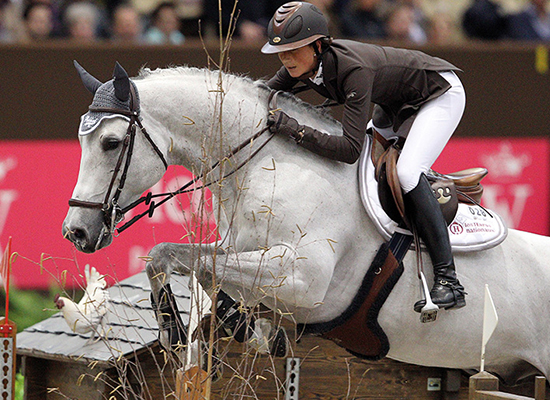2000 171 cm Grey
Breeder: Paule Bourdy Dubois
Mylord Carthago’s sire, Carthago is rightly celebrated but his dam, Fragance de Chalus is a super star in her own right.
The Jalisco B mare traces back to a pure Arab line, registered in the nineteenth century, and boosts a wonderful heritage of Anglo-Arab steeplechasers and showjumpers, including the team and individual bronze medal winner at the 1990 WEG, Morgat. She has just on 70% Thoroughbred and/or Arabian blood.
She competed as an international showjumper, first with David Jobertie, and then with Karline de Brabander. Fragance is owned by one of the pioneers of embryo transfer in Belgium, veterinarian, Joris de Brabander, and the mare has produced an incredible 34 foals to date, including the two top ten stallions in France (on the basis of mares covered) – Mylord Carthago (by Carthago) and Norton d’Eole (by Cento).
Joris de Bradander is a hard guy to pin down in front of a microphone, but I finally pinned him down at Aachen in 2014 where four of the horses in the Nations Cup had been bred by Joris – London and Golden Hawk, both out of the same daughter of Chin Chin, Ta Belle van Sombeke. London is by Nabab de Rêve, the stallion Brabander purchased in Belgium from the Haras de Rêve, while Golden Hawk, more correctly Figo de Muze is by the Nabab son, Vigo d’Arouilles, Mylord Carthago, by Carthago and out of the foundation mare of Stal de Muze, Fragance du Challus and Estoy Aqui de Muze HDC, by Malito de Rêve, out of a mare by Kashmir van Schuttershof by Vigo d’Arsouilles.
How did you get started? Was it a family tradition?
“Breeding is my passion. It’s very hard to make a job out of that but I am a vet. We had stallions, my father had stallions to cover mares but he was not a vet. We were very lucky when we started to embryo transfer, at that moment we could breed with good jumping horses, competition horses.”
How did you find the famous mare, Fragance du Challus?
“I was looking for a very good breeding mare in France and I studied all the bloodlines. Eventually I found this family and saw that her sire, Jalisco was a very good competition horse and at this time one of the best stallions, and her mother was one of the good French competition mares. She was only one year old. I first found her on paper then I tried to find the owner and the breeder, then I tried to buy her.”
“We start breeding with them when they are very very young. For instance with Fragance, we started breeding with her when she was two years old. She had very good offspring, she had a nice jump, she was a good mover, so we started her breeding – then her jumping career came afterwards. At the age of four, five, six she was one of the best Belgian competition mares in the young horse competitions.”
The number varies, how many foals has she had?
“A lot, I think she has more than forty five, and out of that, about twenty good competition horses who jumped more than one forty. She produced three incredibly good stallions, Mylord Carthago, Norton d’Eole (one year, Mylord and Norton were both in the top ten stallions in France!) and Bamako, all three jumped 1.60. (Mylord is of course by Carthago, Norton by Cento and Bamako by Darco) She has now a lot of grandchildren who are stallions…”
You started with pedigree and then found the horse, is that your approach?
“Normally not but at the time we had a few mares at home but I was looking for better. At the moment we bought Fragance, we didn’t have competition horses, so I was looking for better mares than we had at the time in Belgium.”
“Over the years I try to find better and better mares. Now at this moment, I have one very good mare, Butterfly Flip who was in 2003/2004, the best jumping horse in the world. I have a two year old out of the clone of Ratina Z, who was one of the best jumping horses we ever had in the world, that’s a level higher than Fragance. She was a very good 1.45 jumper but not more than that.”
You obviously don’t believe the theory that very good competition horses never produce very good offspring…
“That’s not true. The better they are, the better they can jump, the better the foal. It is true that very good jumping horses normally don’t have good chances, they are too old to breed, or they are in the hands of rich people, or they are in countries where they don’t have a breeding culture, and very often when a guy has a very good competition mare, he uses his own stallion which is very often not good enough. If you breed to very very good mares, it is always better than breeding to the others.”
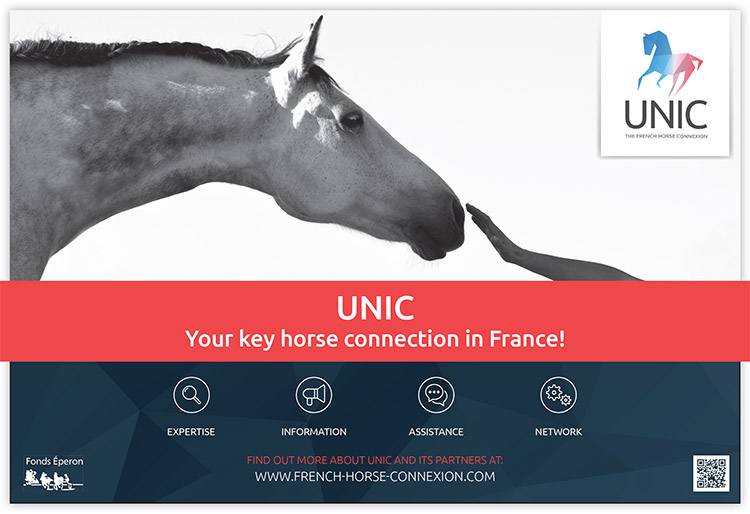 http://www.french-horse-connexion.com
http://www.french-horse-connexion.com
Quite soon, Mylord caught the imagination of the French breeders and in 2007, he was the most popular stallion standing at a National Stud, and the third most popular stallion for the season with 282 coverings. According to Bernard le Courtois in his survey in Monneron 2008 – 2009:
“This pretty grey horse, of a very flattering pedigree, issues from an excellent Anglo Arab lineage, going back to the champion, Morgat. His dam (Fragance de Chalus) a winner in CSI shows, had an important production in Belgium, thanks to embryo transfers… Mylord Carthago is now ridden by the talented Pénélope Leprévost, with whom he was fourth in the 7 year old championships in Fontainebleau and Lanaken.”
As usual, Bernard’s evaluation is balanced: “His own sire, Carthago, is a very popular sire of international winners, but a closer look reveals that over the last few years, females and geldings by Carthago are higher in the WBFSH world classification than males. What could be the reason? For the time being I don’t have an answer, if only that the male Carthago products are sometimes ataxic (lacking motor coordination caused by ataxia). We will see if Mylord Carthago is his first male to figure in the upper levels of the world classification some day. He should begin Grand Prix in 2008.”
Mylord Carthago and Pénélope Leprévost not only commenced Grand Prix that year, but won the Grand Prix at La Courneuve CSI***. The following year they won a 1.50 at Stuttgart*****. In 2010, they won the 1.55 class at Paris, and lead the French team to victory at Aachen with a double clear. In 2011, they won the Grand Prix of Paris and were second at La Baule. In 2012, they won at Helsinki, Vienna, Gijon, and once again lead the French team to victory at Aachen with another double clear.
The pair represented France at the London Olympic Games, the Lexington WEG, and the Europeans in Madrid.
Mylord Carthago was injured in 2013, then it was reported that Haras France was going to sell the horse along with all the other stallions of the National Stud, at an auction to be held the day after the WEG in Normandy, but those plans were abandoned and it seems that the remaining stallions, including Mylord, will be leased. Mylord is now one of the stallions on offer from the GFE group in France, and according to Arnaud Evain, it is a case of wait and see to judge whether he will work as a sire:
“Mylord has from Carthago the athletic ability, but it took Mylord Carthago a long time to become an efficient athlete, and it seems that the progeny of Mylord also needs time to become efficient. They need time to build up.”
“There are two speeds on the market. The speed of selling foals and three year olds, which is the concern of all the people who breed for money and they need to sell young. Then there are stallions like Mylord and Kannan or For Pleasure, that are not so popular for this business. If you want the first market, there are stallions like Heartbreaker, Caretino, Catoki, cute, spectacular jumpers, even if they haven’t got all the scope and all the power. If you are looking to produce a champion for the long term, you might consider For Pleasure or Kannan – the breeder has to decide what he wants to produce.”
Gemma Alexander examined the carefulness ranking of the top 10 stallions on the 2020 WBFSH rankings – ‘to do this we look at the top10 offspring of each ranked stallion, and work out the proportion of clear rounds they have jumped of all their rounds at a height of 1.50m or higher. We only took results from the first round of competition, excluded Table C and Accumulator competitions, and accepted clear rounds with time as we are purely looking at carefulness. Again, this ranking is not perfect – none are! – however we think it is another pretty nifty way of ranking these stallions.’
Of our top 10, the sire who’s progeny are the most careful is Mylord Carthago (carefulness ranking 43.2%). The top five is rounded out by Casall (43.1%), Toulon (39.3%), Kashmir (38.7%) and Diamant de Semilly (36.7%).
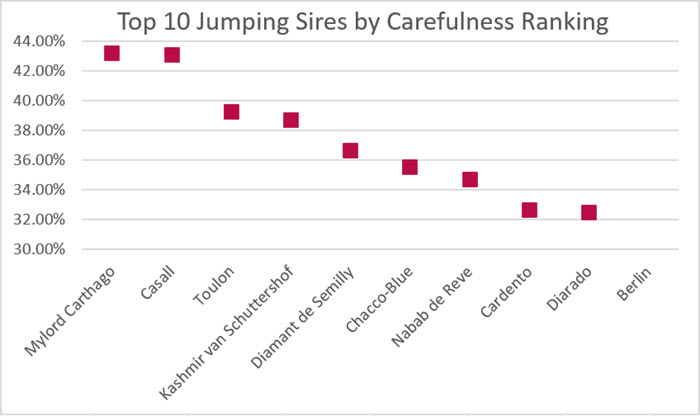 MYLORD ranked in 4th on the 2020 WBFSH jumping sires rankings.
MYLORD ranked in 4th on the 2020 WBFSH jumping sires rankings.
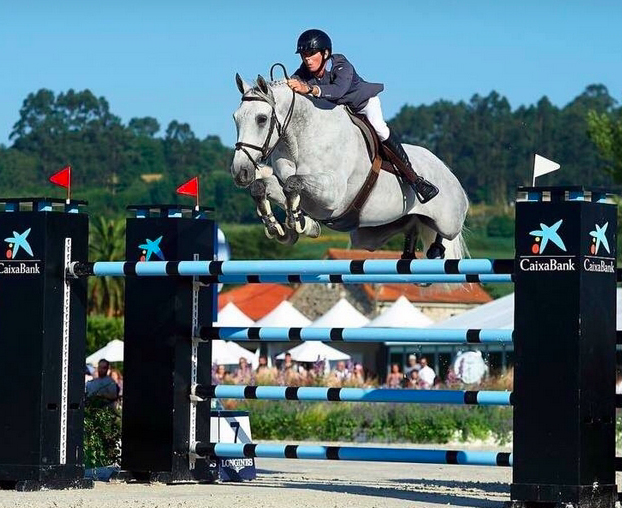
Timon d’Aure
His progeny include Timon d’Aure : 9th individually at the WEG Tryon 2019; 2nd GP CSIO5* in Dublin, 6th GP CSIO5* in Rotterdam, 2nd of the GP 5* of Dublin, winner of the GP 4* in La Coruña and Bourg en Bresse. Tino la Chapelle, in 2019 winner of Nation Cup of Wellington and 4th of Nation Cup of Vancouver. CSI5* in America with J.J. Saldago winning in CSI5* and 3rd stage World cup of Vancouver with Juan Jose Zendejas Saldago 2018. Valmy de la Lande 4th GP CSI5*-W in London now competing internationally with Michael Whitaker.
Twenty Two des Biches second at the World Cup Final in Omaha, 2nd CSIO in St Gallen, Winner in CSI5* and bronze medal at the European Championships with Romain DUGUET, in 2019 he was 5th of a 1m50 CSI5* in Paris, ISO 173.
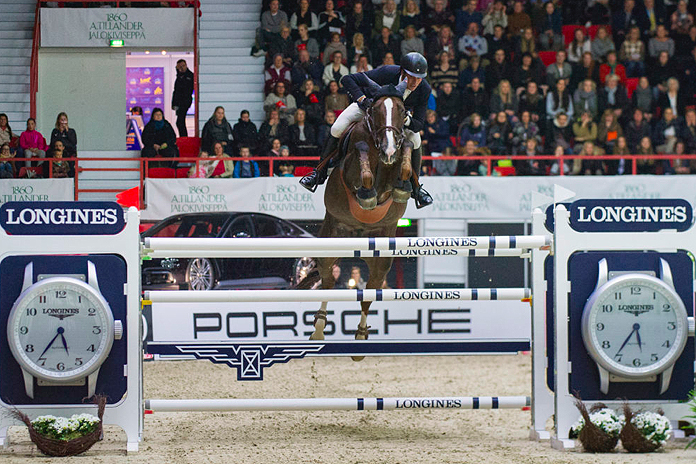
Twenty Two des Biches
Mylord is also proving an interesting sire of eventers – ranked 35th on the 2021 WBFSH eventing sires list.
His progeny include Totem de Brecey, second at the CICO3* of Strzegom and CIC2* of Jardy in 2018 with Christopher Six and 4th of European Championships Eventing of Luhmühlen in 2019 ; Tim de la Lande, ICC 151, winner of the CIC3* of Le Pouget and CCI2* of Cluny with François Lemiere in 2016 then with Umberto Riva he won the CIC3* of Sopot; Babylon de Gamma, ICC 155, bronze medal-holder of the 7 years World championship with Nicolas Astier and winner of CCI4* of Blair Castle.
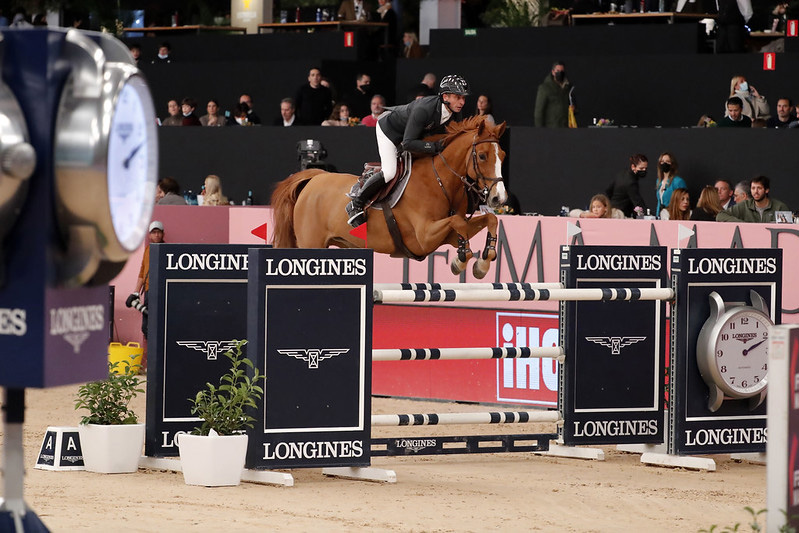
More glory for Mylord in 2021 – Billabong du Roumois and Julien Epaillard win the World Cup Qualifier in Madrid…
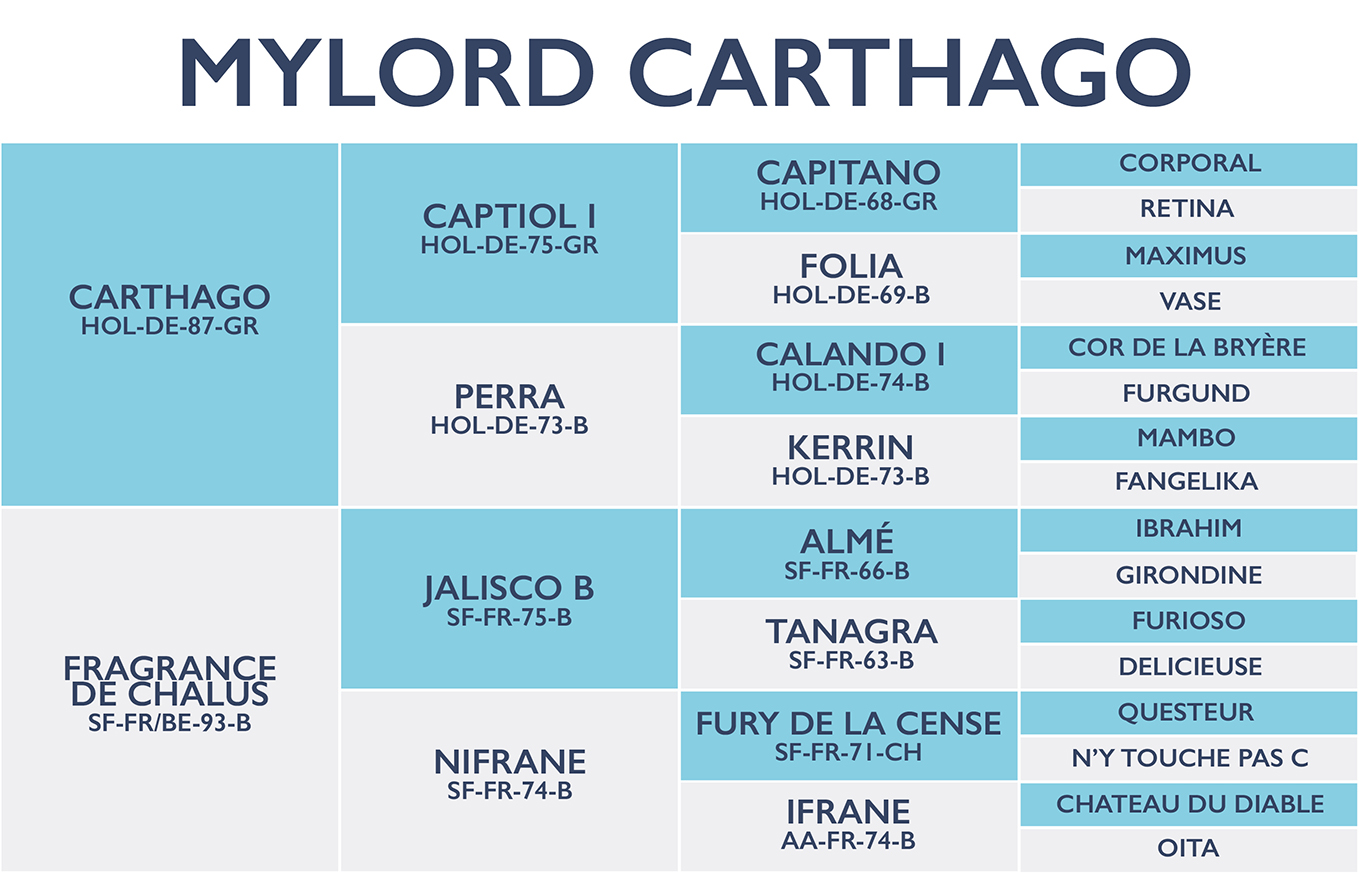
« Back to Great Stallions List

